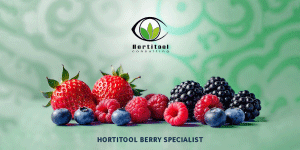In recent months, requests from growers and technicians have multiplied, all sharing a common theme: the hope that technology can provide an accurate estimate of agricultural yields quickly and automatically.
Some ask whether a satellite can photograph fields and predict the number of kilos of fruit that will be harvested, while others imagine drones flying over crops to count the fruits, detect their color and size, and estimate the entire production in seconds.
A fascinating idea, but one that often clashes with the real limits of technology and the costs of large-scale application.
Field experience
Field experience: what can technology really do? A few months ago, one of the country’s leading blueberry exporters proposed an ambitious project: using drones to automatically count fruit in the field.
The answer was clear: artificial intelligence is a powerful tool, but it is neither infallible nor cheap, especially when applied to large-scale crops.
Indeed, computer vision can recognize objects with remarkable accuracy, detect colors better than the human eye, and analyze large amounts of data in a very short time.
However, it cannot detect what is not visible: in blueberry bushes, many fruits are hidden among leaves, branches, or shaded areas. In these cases, it’s not about counting, but estimating—and the more you estimate, the greater the margin of error.
A question of sustainability
A matter of economic sustainability A pilot project on one hectare may seem like a good idea, but when scaled to hundreds of hectares, the situation changes drastically.
Multiple drones are needed, expert operators, spare batteries, stable connectivity even in rural areas, cloud infrastructure, computing power to process millions of images, technical support, maintenance, logistics.
In the end, the cost per hectare could exceed that of a team of expert evaluators—with the risk of obtaining less accurate data.
The real role of technology
The real role of technology: integration, not replacement. The value of technology lies not in completely replacing humans, but in supporting them with tools that increase efficiency and data quality.
An app installed on a smartphone can record counts with geolocation, reducing human error and ensuring traceability.
A well-constructed statistical model can indicate the ideal number of plants to sample in order to obtain truly representative data, avoiding estimates based on limited observations.
The camera of a smartphone, integrated with artificial intelligence algorithms, can measure fruit size or detect phenological stages.
All this data, when integrated into software alongside weather information, phenological curves, irrigation, and nutrition data, allows for more informed production management.
Looking to the future
Looking to the future with clarity Dreaming of a fully automated solution that turns yield estimation into a single click is tempting—but as of today, it remains a distant goal, especially for large-scale operations.
The real question is not what a drone or satellite can do, but how to use technology strategically, so it becomes a valuable investment rather than just a cost.
After all, current estimates suggest that blueberry export companies may face a 15% margin of error in harvest forecasts.
On an annual turnover of $100 million (about €92 million), this could mean potentially $15 million (about €13.8 million) "lost" due to inaccurate estimates. And even if it were just $1 million (about €920,000), wouldn’t that still be a good reason to rethink the harvest approach?
Source text and image: linkedin.com










